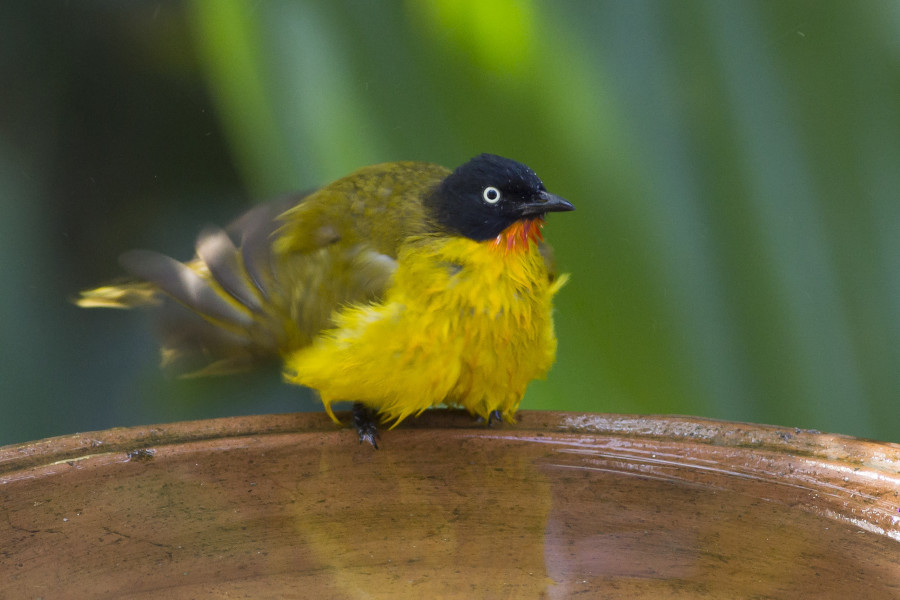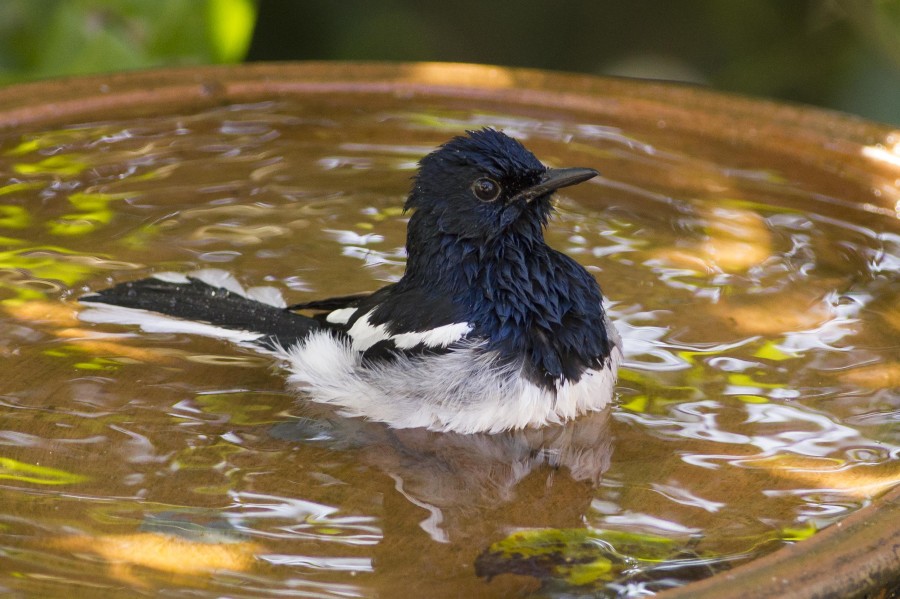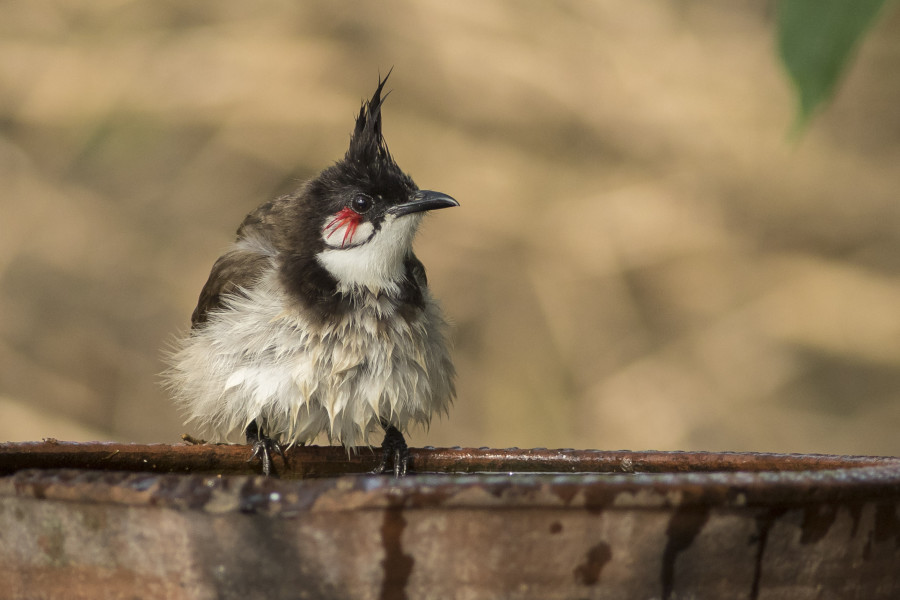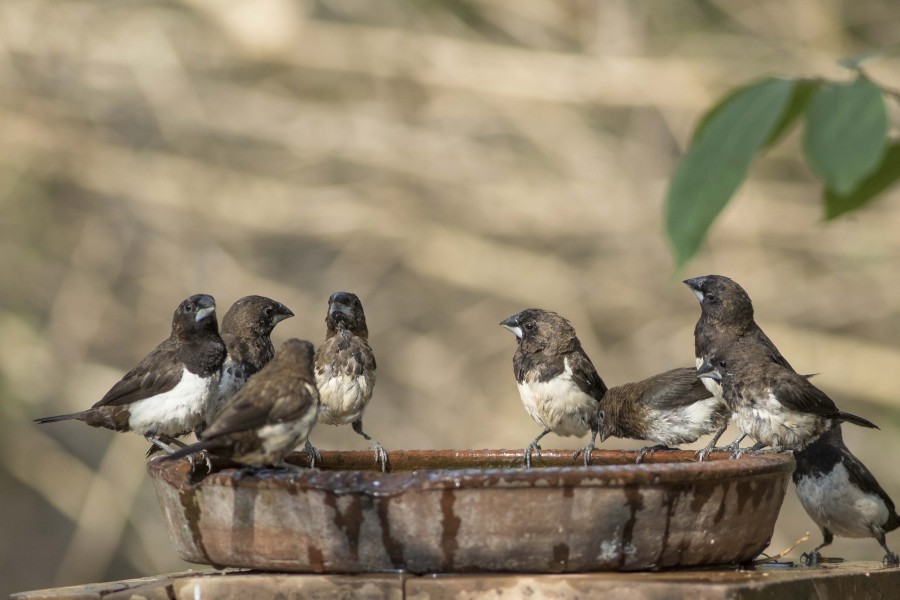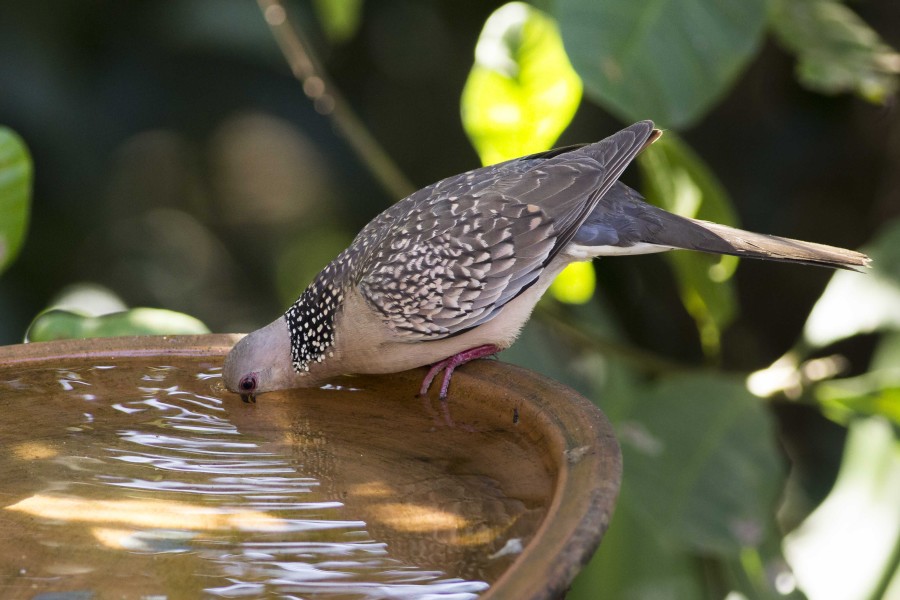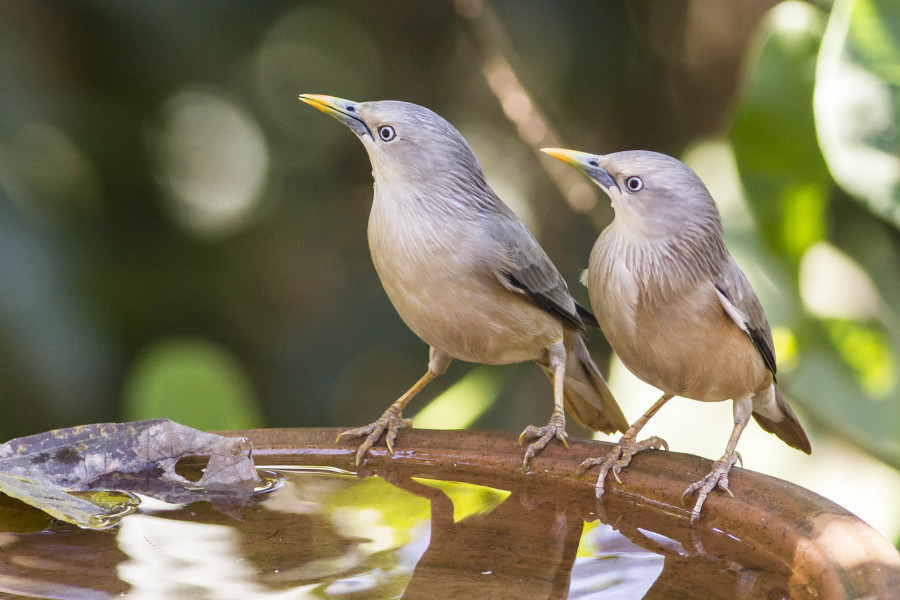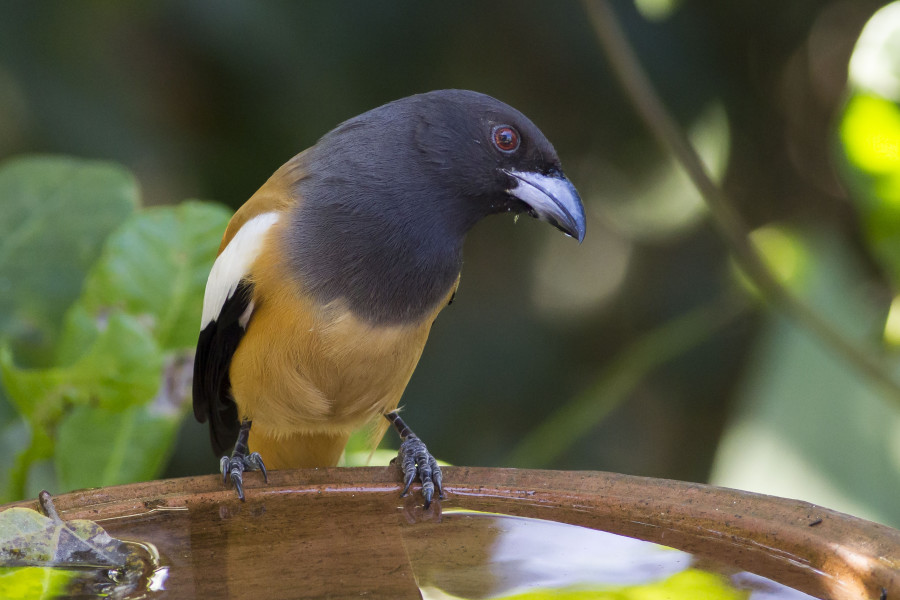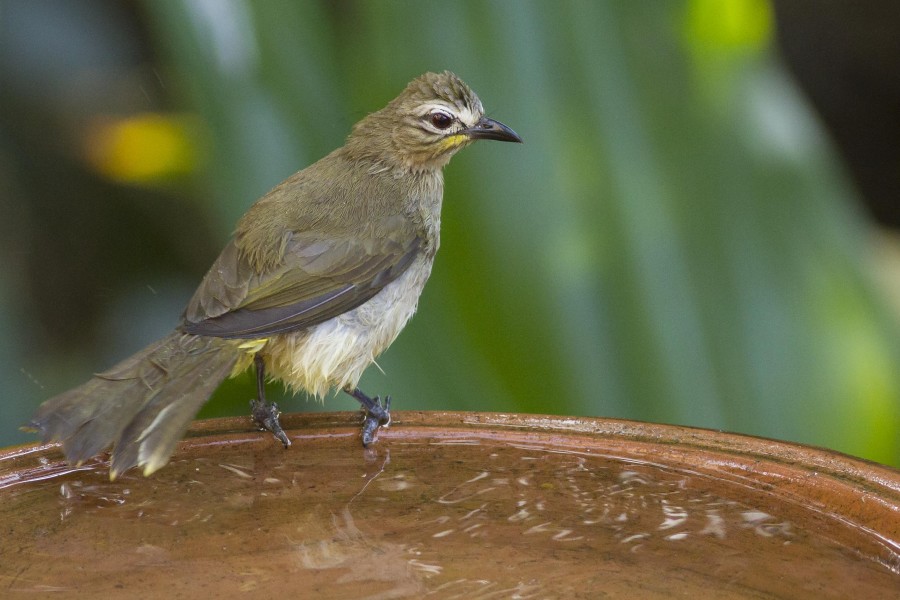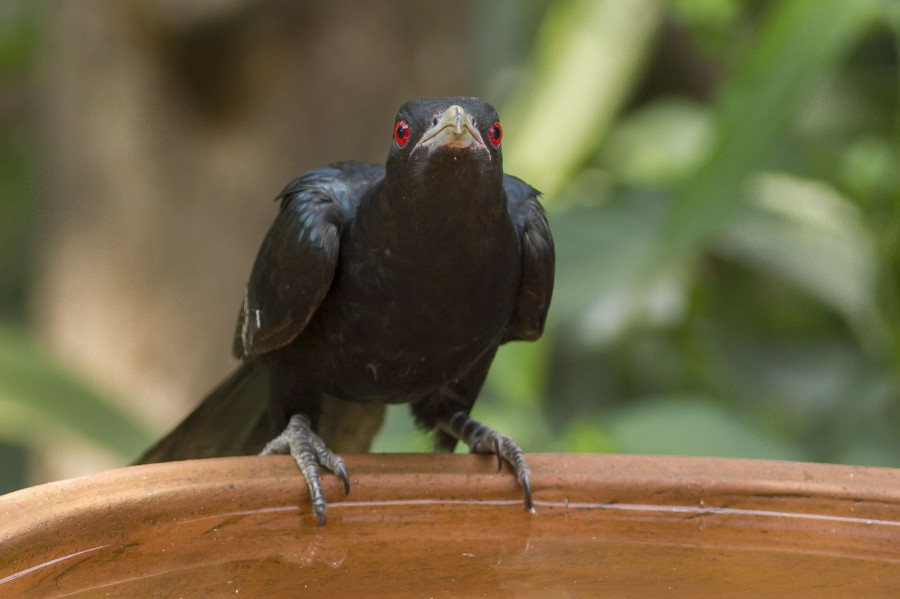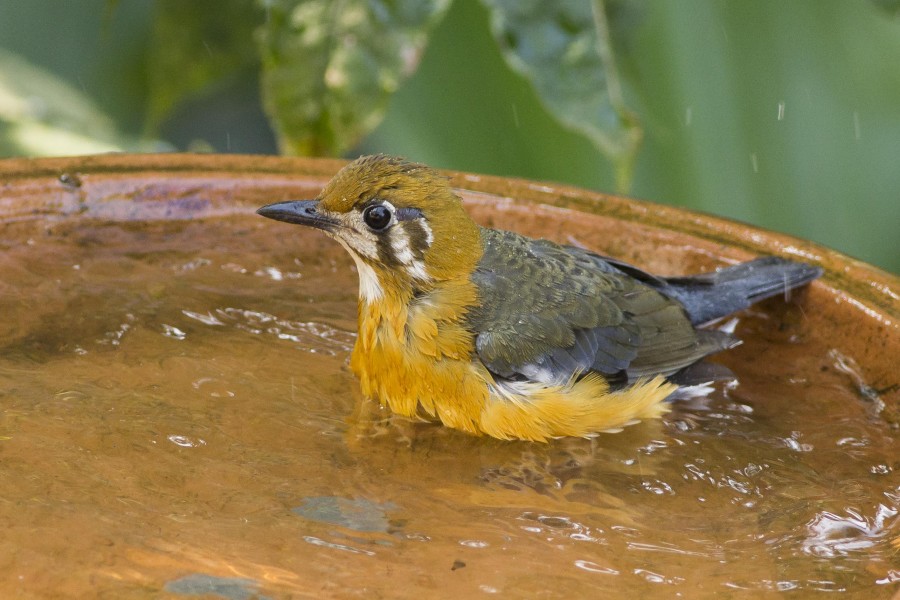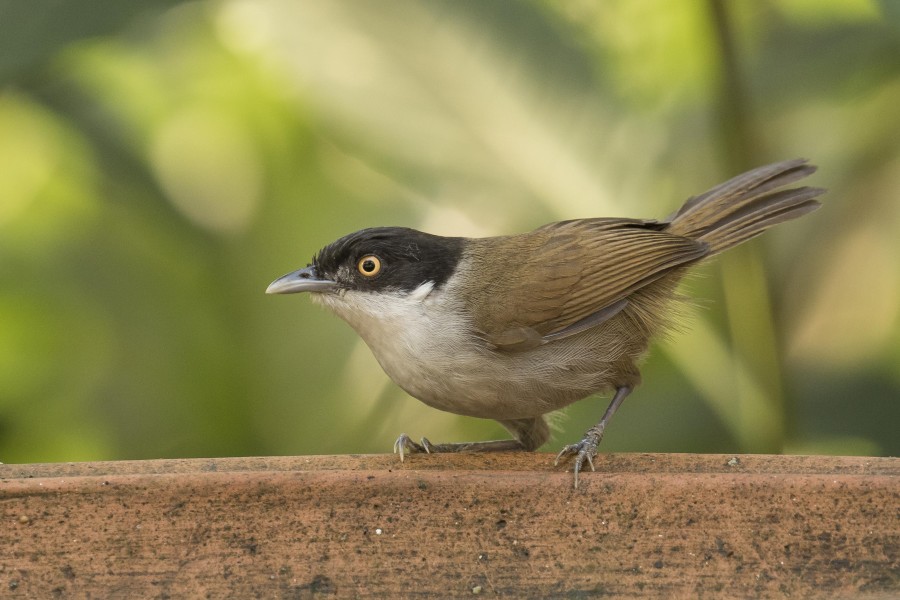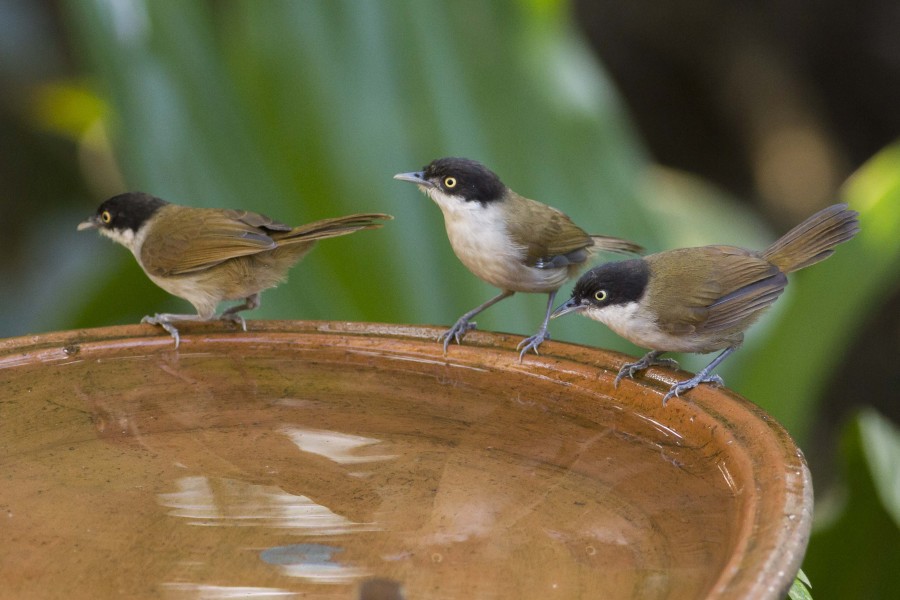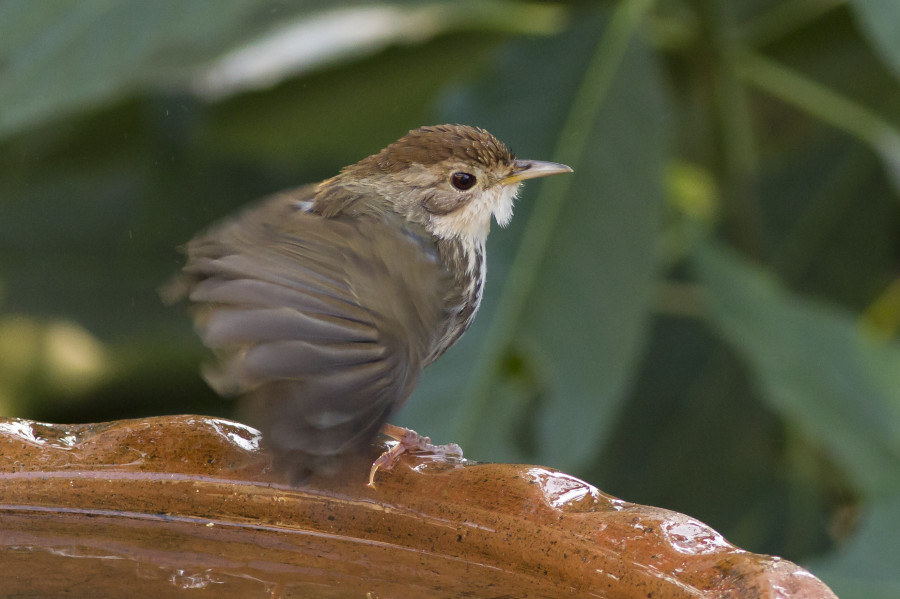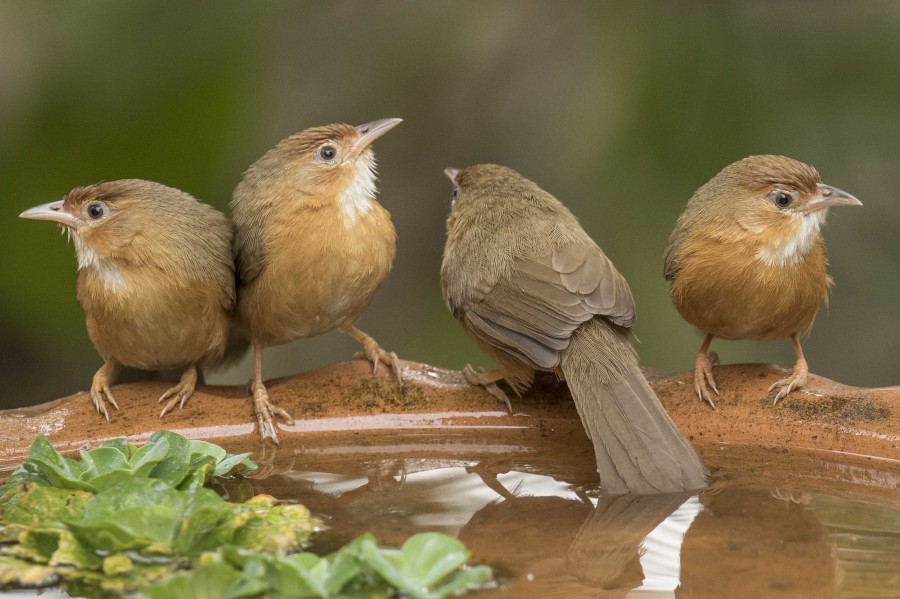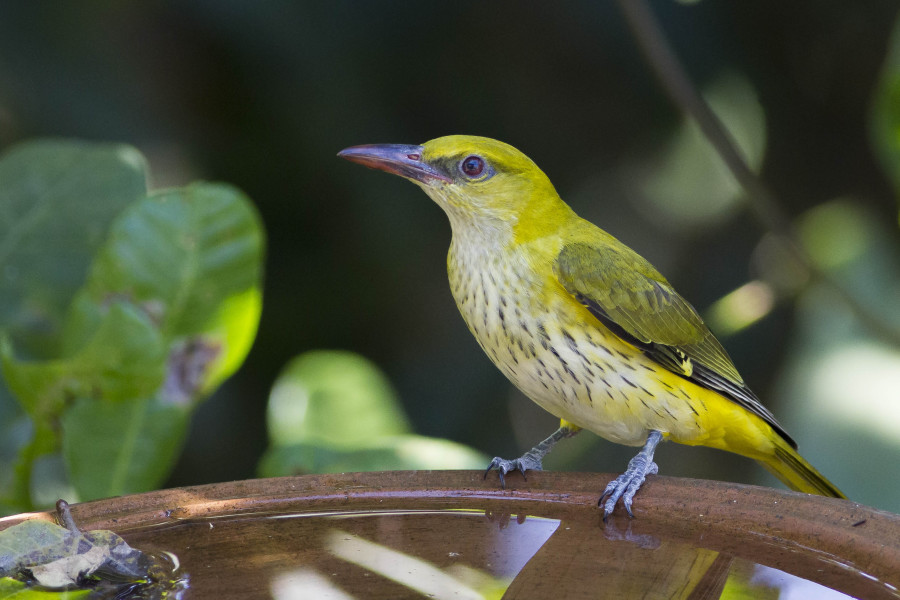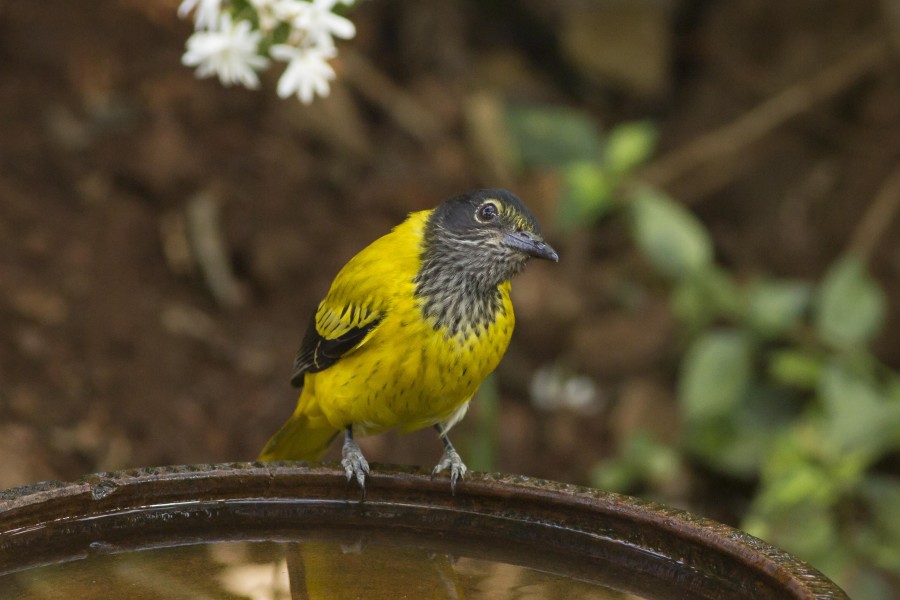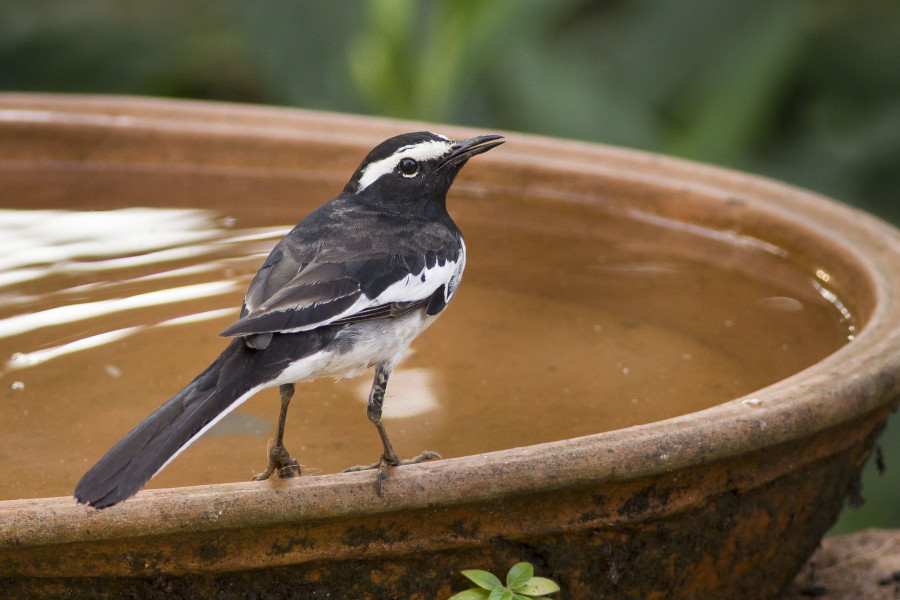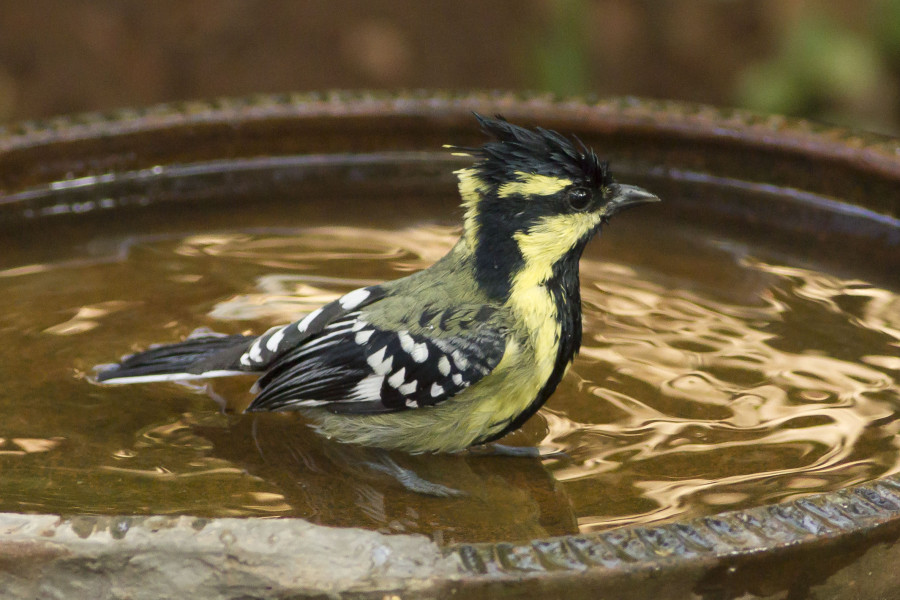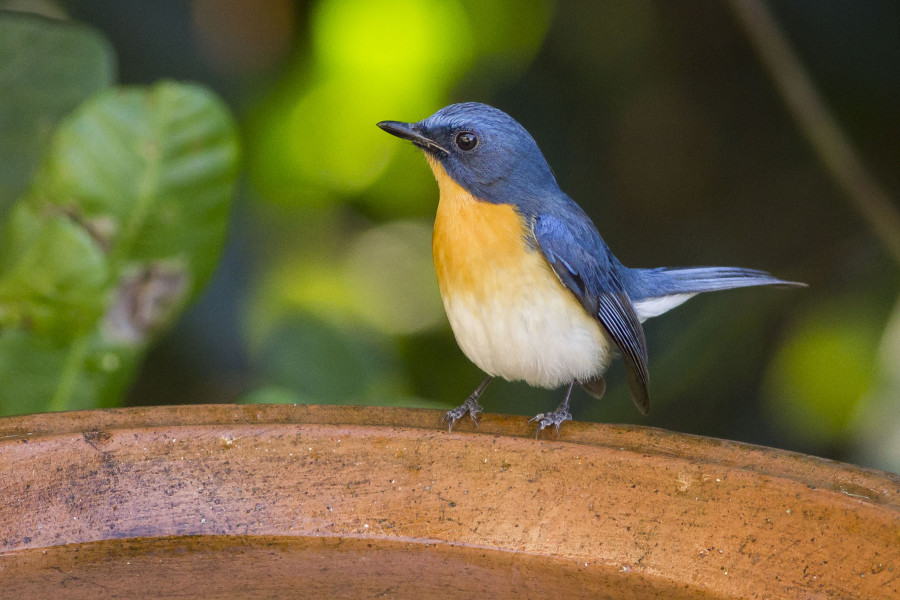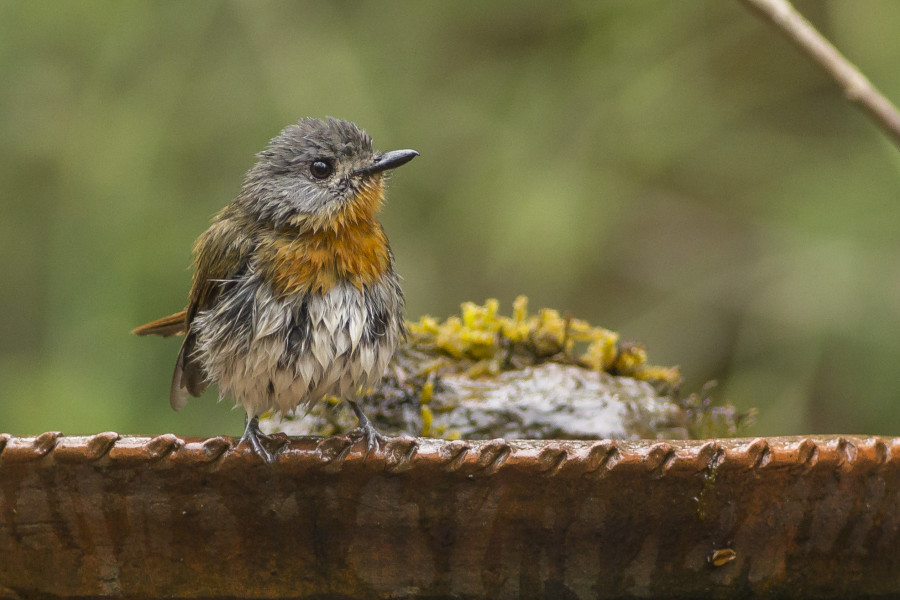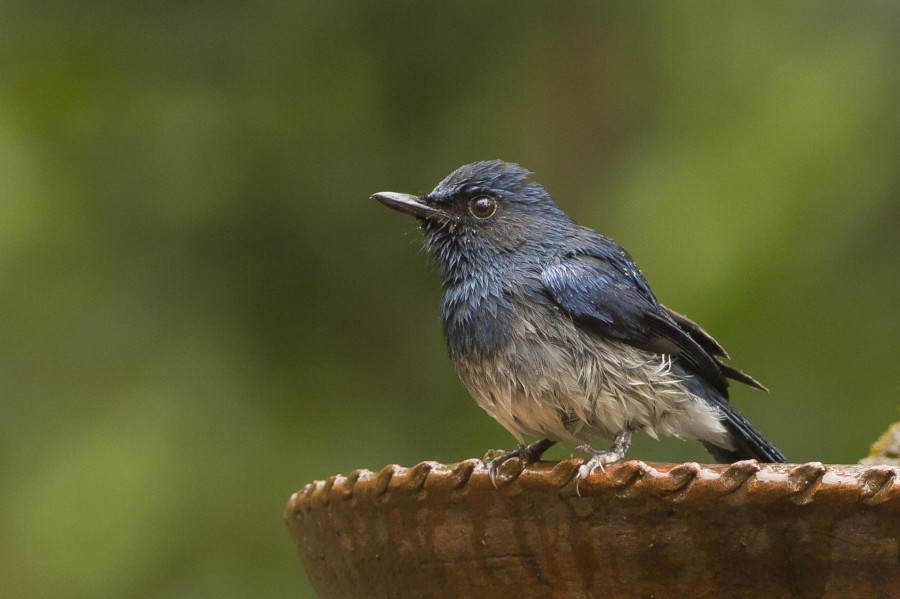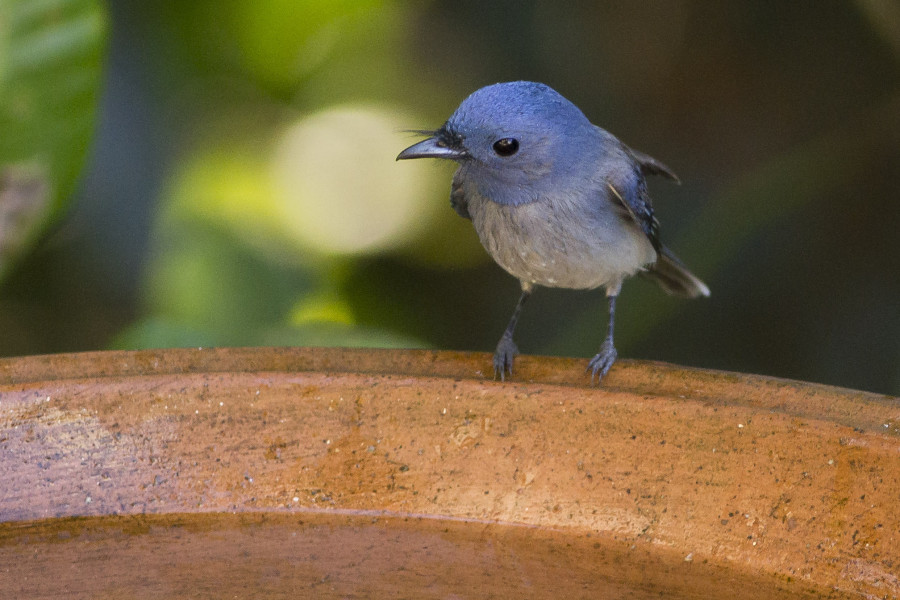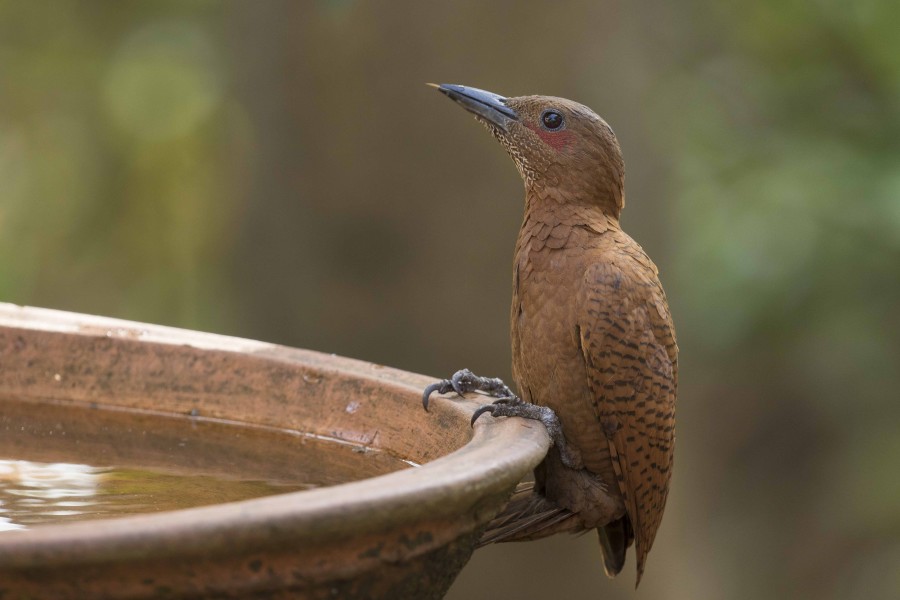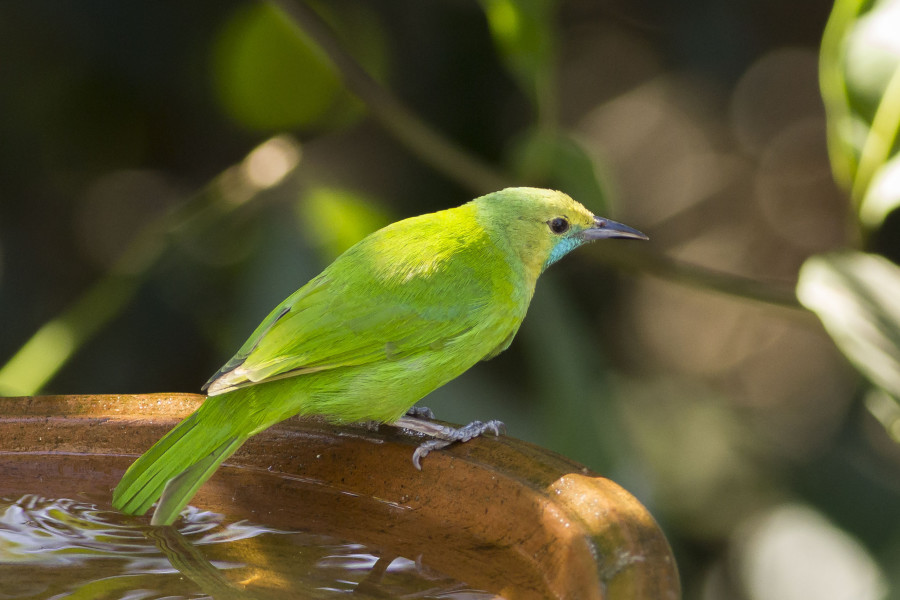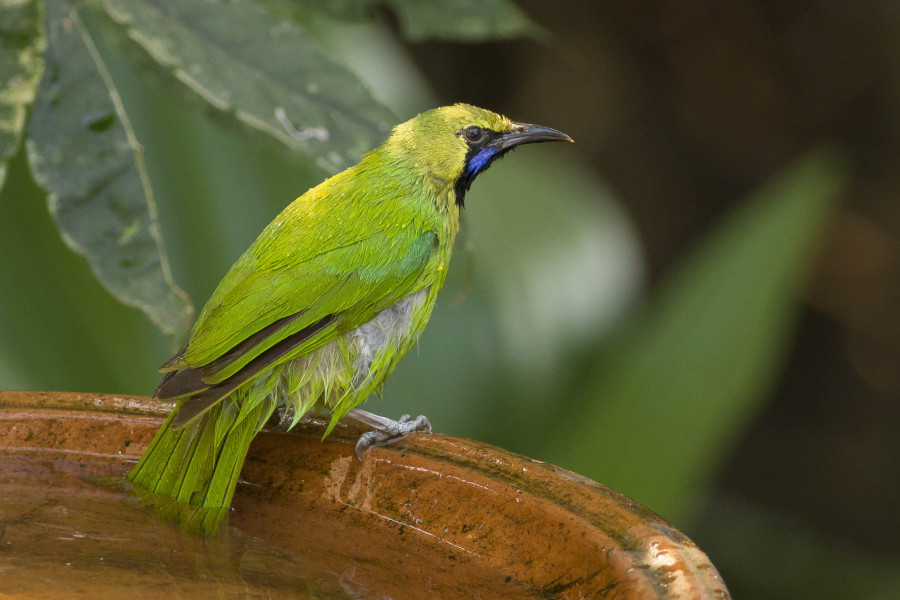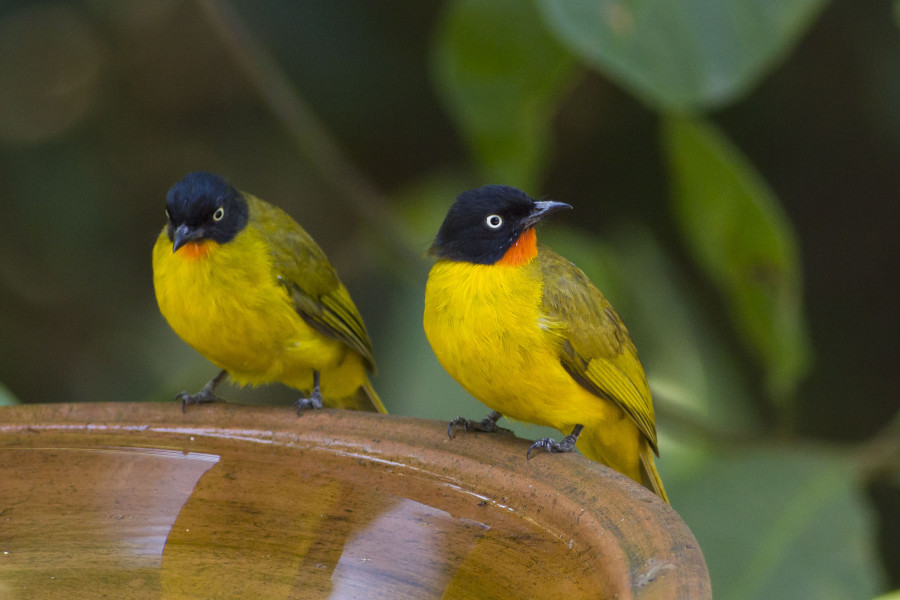When I brought out my coffee table book ‘Birds of Goa’ coauthored with Heinz Lainer, I compiled almost 300 images for it that were all shot over a span of one and half years. Interestingly 40% of these images were shot in the short two months before the book went into the editors’ hands. No big surprises here since nothing gets you quite as focussed as an imminent deadline from your publishers!
During those two months I simply went out each morning with my camera and parked myself some distance from a particular bird that I wanted to photograph. In most cases I’d need to give my subject about two hours to get used to me and then I’d have my shots of it. What’s most interesting however is that 10% of the photographs used in my book were shot over just two sessions at a single site and a single bird bath! That’s how productive bird baths can be!
A bird bath, if you don’t know it already, is a simple mud plate about two inches deep and about one and a half times the size of a regular dinner plate. Place this wholly unsophisticated vessel under a shaded tree if possible and fill it with water. For best results keep the bowl at a height of four to five feet. Watch and maintain the water level in it and if necessary clean the bowl from time to time. Then, if you’re doing it right, in a week to 10 days you’ll start to notice tentative drinking forays from some of the bolder avians in your neighbourhood. In two to three weeks you should be able to tell the regulars from the newbies. And in a month or two word will have gotten around among the avian clan about the eternal spring in your backyard and by then your bird bath will be as busy as a popular nightclub!
Of course like all real estate the game here really is location, location, location. The birdbath I shot at was maintained and nurtured by friends of mine Simerna Sidhu and Nicky Thomas who live in Palolem Goa just 10 kilometers shy of the gorgeous Cotigao wildlife sanctuary. Cotigao is home to some spectacular beauties of the Western Ghats such as the Malabar Trogon and the White-bellied woodpecker. These birds didn’t make it all the way to the bird bath but some other equally rare species did. I’ll divulge more as we go through the individual birds I photographed at the birdbath.
But if you don’t live near Cotigao don’t be disheartened. I’ve had good sightings with totally different and equally valuable species at a bird bath maintained by another friend Steven right in the middle of Mapusa town! My own bird bath is situated in the unassuming village of Assagao and gets me the Crimson sunbird. Now this bird doesn’t ever show up at Simerna’s birdbath. The moral of the story is to set up a birdbath wherever you are. For there’s no telling what you might find or what might find you right outside your window!
Before I tackle the birdbath list I want to clarify a few details pertaining to all the shots I took: 1. All the birdbaths featured below were situated in the shade and therefore the most trying part of the whole experience was getting sufficient light to photograph. More than half the shots were taken at 800 ISO on a Canon 550D. The other half were shot at 400 ISO. The lens used was the Canon f 5.6 400mm prime lens. Considering that almost all the shots were made at a shutter speed of 200th of a second I had to use a tripod. I positioned myself about 5-6 meters away and shot from a window. The window was higher than I’d liked it to have been and therefore most of the shots seem to be shot from above eye level.
To provide more variety and avoid the monotony of all the bird species posed picture perfect on the birdbath I tied branches to serve as perches for the birds. The birds took to the perches like ducks to water and I benefitted with several close ups of the birds taken at a much more flattering angle. I have however specifically included only the shots taken at the birdbath to prove and illustrate without a doubt just how productive birdbaths can be.
Now let’s hit the list!
1. Oriental magpie robin: usually the first bird to make an appearance on a birdbath! When I first setup my birdbath at home the resident magpie took about 5 minutes and 12 seconds to land on it. Or at least it seemed like that! Magpie robins are just as home in the water as they are with people. Just look at the specimen in the picture indulging in a full birdbath! They are also quick to elect themselves as full owners if not at least majority shareholders at any newly setup birdbath! Males have blue-black heads while females have bluish grey heads. Magpie robins are particularly known for their calls and will often sing melodiously (albeit at times annoyingly), for long periods of time.
2. Red-whiskered bulbul: usually the second bird to make an appearance on the birdbath! Red-whiskered bulbuls are easily identified by their tall crests and pink cheeks. These are gregarious birds and when one shows up another two aren’t far behind! The Red-whiskered bulbul is as much at home in the forest as it is around human habitations. Interestingly this Asian species has now established itself in places including Los Angeles, Sydney, Melbourne, Hawaii, and Florida! Adult birds feed on fruits, berries and insects. Young birds are fed caterpillars and insects and introduced to fruits and berries as they mature.
3. White-rumped munia: this is a small passerine bird from the family of waxbill finches. They are are closely related to true finches and true sparrows and feed mostly on seeds. White-rumped munias have also been observed to feed on algae and apparently they obtain their protein from consuming spirogyra which grows in paddy fields. Munias are extremely gregarious birds and it isn’t uncommon for 10 to 15 individuals to show up together at a birdbath. Though they delight in water they are diffident bathers and usually only skim across the surface whilst dipping just their undersides. Once they discover a birdbath they will return to it several times a day and sometimes as often as four or five times every hour!
4. Spotted dove: The spotted dove is a small and relatively long-tailed pigeon. Spots on its neck and wings make it for a very pretty bird to photograph. At the birdbath the spotted dove always arrived alone. Done with drinking it took off in an explosive flutter in the way that all pigeons do. Like the Red-whiskered bulbul this species has now established itself in places including Hawaii, southern California, Mauritius, Australia and New Zealand. For me the Krookruk-krukroo…kroo kroo kroo call of the spotted dove is the quintessential call of the jungle. I associate it with my earliest experiences of being out in tiger forests and I’m reminded of this every time I hear it when birding early morning in Goa.
5. Chestnut-tailed starling: The Chestnut-tailed starling is a winter visitor to Goa. It is a resident in north eastern India. A closely related and more beautiful species (in my opinion!) is the Blyth’s starling. The Blyth’s starling is a resident of the Malabar region and therefore found in Goa throughout the year. While the Blyth’s starling is often found singly or in small groups, the Chestnut tailed starling is a very gregarious bird. Flocks of them will descend on a birdbath or a Silk cotton tree in flower. The Chestnut tailed starling is an easy bird to spot in Goa during the winter and is often found in open woodland and cultivation areas. Like all starlings these birds are omnivorous, eating fruit, nectar and insects.
6. Rufous treepie: The rufous treepie is a member of the Corvidae (crow) family and about the largest bird that will visit your birdbath in Goa! These birds will often show up in pairs and are extremely loud and conspicuous with their calls. The rufous treepie has two distinct calls. The first is a very rough ke ke ke ke ke and the second a very metallic and melodious boboink! Like most members of the crow family these birds are adaptable, opportunistic, and omnivorous, taking fruits, seeds, invertebrates, small reptiles and the eggs and young of other birds. They have even been known to scavenge off fresh carcasses. In India the range of this species is very large covering all of the mainland all the way up to the Himalayas.
7. White-browed bulbul: This is a bird that you hear far more often than you see. The white-browed bulbul’s call is an effervescent bubbly chirp and loud enough for you not to confuse it with that of any other bird. This large bulbul generally inhabits dense scrub vegetation and its skulking nature adds to the difficulty of spotting it. Don’t fret if you can’t spot one even when you’re able to hear it calling from a close distance. Because in my opinion, the call of this bird is far more exciting than the plumage it wears! White browed bulbuls are a drab olive brown and their only distinguishing characteristic is a ‘white brow’ just above the eye. White browed bulbuls are endemic to southern India and Sri Lanka but occur as far as Gujarat and Madhya Pradesh.
8. Asian Koel: This large noisy avian is a member of the cuckoo order of birds and like other members of its family is a brood parasite. Female cuckoos lay their eggs in the nests of jungle crows, house crows and other hosts and rely on these unwitting foster parents to bring up their young! Adult koels have a distinct sexual dimorphism. Male koels are a deep bluish-black while the females are dark brown with white and buff spots. Being dark a male koel can sometimes be mistaken for a crow, especially when you can’t get a look at the complete bird. But the bright crimson eye of the koel is unmistakeable and makes it easy to tell the koel from the crow. Koels are mostly omnivorous, taking insects, eggs, caterpillars and fruit.
9. Orange-headed thrush: Despite being a resident this beautifully plumed bird is difficult to spot outside the breeding season. This is because this starling sized bird feeds on the ground under dense vegetation and is mostly active only at dusk or dawn. In addition it is especially silent during the winter. But come summer and the same thrush will perch itself on a branch midway up a tree and sing with varying notes continuously for several minutes at a time. At the birdbath this bird proved to be relatively bold and made several visits a day to drink from it and scrounge around for tidbits on the ground surrounding it. Orange-headed thrushes are omnivorous, eating insects, spiders, earthworms and fruit.
10. Dark-fronted babbler: Before I knew Simerna’s birdbath I’d only ever seen one species of babbler, namely the large and noisy jungle babbler. Her birdbath however revealed not one but three new species of babblers for me (dark-fronted babbler, puff-throated babbler, and tawny-bellied babbler)! All these three species are relatively common in Goa but because of their small size and secretive nature, they are very difficult to spot in the wild. Five years of being a birding guide in Goa had not found me one specimen. And now at the birdbath I was spoilt for choice! My favorite among these small sized babblers was the dark fronted babbler. Something about the combination of its black cap with its pale yellow iris make it for a very mischievous and funny looking bird. The dark-fronted babbler like other species of babblers forages in parties in dense vegetation. It is primarily an insect eater.
11. Puff-throated babbler: This is the second of the three new babbler species I spotted at Simerna’s birdbath. Like the dark-fronted babbler it keeps to dense undergrowth while foraging and is therefore very difficult to spot. But unlike the dark-fronted babbler this species has a loud, long and very melodious call. Once identified the call of this bird is unmistakable and cannot be confused with that of any other bird. The bird gets its name from the fact that it sometimes holds its chest puffed out! Like most babblers this bird is not migratory. It has short rounded wings and a weak flight, but makes up with strong legs which it uses to hop along the forest floor in search of insects.
12. Tawny-bellied babbler: My first impression of this bird was that of a tennis ball with a beak, two eyes, and a tail sticking out of it! Although a golf ball is more likely since this bird is barely 12 centimeters long with its long tail included! The tawny- bellied babbler belongs to the family of Old World babblers characterized by soft fluffy feathers. Like all other babblers this bird only ever descended in a group upon the birdbath. And like most babblers it rummages for food in the dense undergrowth. It should therefore come as no surprise that this makes it extremely difficult to spot when birding in forests. The tawny-bellied babbler feeds mainly on insects and nectar.
13. Indian golden oriole: For some reason only the female of this species made regular appearances at Simerna’s birdbath. Orioles show strong sexual dimorphism and the males are famous for their utterly stunning yellow and black colours. But this single female, though not anywhere near as brightly coloured as a male, held her own with a beautiful peppery streaked pattern all along her breast. Though she made several appearances at the birdbath everyday she never called or made a sound. The golden oriole inhabits a range of habitats including open deciduous forests, semi evergreen forests, woodlands, mangroves, parks, orchards, and plantations. They feed on fruit, nectar and insects.
14. Black-hooded oriole: The bird in the photograph was photographed at Steven’s house in Mapusa. Like the Indian golden oriole this oriole arrived alone. And only after after a careful scrutiny of its surroundings did it finally settle down on the birdbath to drink. Male black-hooded orioles like golden orioles are stunning yellow. But they are easily differentiated from the latter by their jet black heads. The specimen in the photograph is a juvenile lacking the jet black head and with heavy streaking on the throat. Black-hooded orioles are resident birds in Goa and seen year-round, unlike the Indian golden oriole which only makes its appearance in the winter season.
15.. White-browed wagtail: This bird is the largest member of the wagtail family. As its name suggests the white-browed wagtail constantly wags its tail up and down as it walks around on the ground. White-browed wagtails generally frequent water bodies but at the birdbath this bird only showed up occasionally. Like other wagtails this bird is insectivorous and feeds on spiders, insects, beetles and other bugs. The white-browed wagtail is a resident breeder and endemic to the Indian subcontinent.
16, Black-lored tit: This pretty little bird is usually very active and fidgety and therefore very difficult to photograph in the wild. At the birdbath however they often landed on a perch I placed strategically and gave me ample time to photograph them. They seemed to revel in the birdbath as the photograph shows, and made several visits in the span of a single afternoon. At Steven’s birdbath they were fairly common birds. I never found them at Simerna’s birdbath however. Black-lored tits usually feed on insects and spiders but sometimes also feed on fruit.
17. Tickel’s blue flycatcher: The Tickel’s blue flycatcher is a small and very beautiful bird in possession of a short high pitched and very melodious call. On my bird trips I often draw my client’s’ attention to its distinct call but thanks to the bird’s habit of sitting in thick undergrowth I’m very rarely able to show it to them. Fortunately for me this little bird seems to be addicted to birdbaths and in just a few sessions I was able to get some very satisfactory shots of it. The Tickel’s blue flycatcher always arrived alone at the birdbath and even after drinking its fill it never seemed to stray far from the water source. This flycatcher is primarily insectivorous and is agile enough to pick out insects in flight!
18, White-bellied blue flycatcher: This beautiful flycatcher is endemic to the Western Ghats and I was only able to photograph it thanks to a birdbath setup by a small lodge in Dandeli National Park located in Karnataka. The species shows strong sexual dimorphism. Males are indigo blue on the back and head and greyish white on the belly, while females are drab brownish with a rufous breast patch. Like other flycatchers these birds feed on insects and are experts at picking them even as they buzz around.
19. Black-naped monarch: This little flycatcher was one of the smallest and prettiest birds to turn up at Simran’s birdbath. The bird has a call that sounds very similar to that of the paradise flycatcher and because of that Simerna could always warn me when the bird was about to show up for a drink. At the birdbath the male and female always arrived together. Astonishingly the tiny male, on first arriving at the birdbath, would chase every other bird off it. Then as soon at the birdbath had been cleared of other birds he’d call to the female so she could drink alone in peace! Black-naped monarch’s show clear sexual dimorphism with only the male having the black nape on top of its head. Pictured here is the female (with no black nape) about to take a sip of water.
20. White-rumped shama: Most birdwatchers are very excited to spot the white-rumped shama. While the shama is certainly an interesting bird to look at, I for one, am much more fascinated by its call than anything else. The shama’s call is rich and melodious with a variety of phrases and the bird can go on for several minutes non-stop. This talent of the bird unfortunately made it very popular as a cage bird carrying it to distant corners of our planet. While the white-rumped shama was originally found only in India and south-east Asia, today it has established itself in places as remote as Kauai, Hawaii, Oahu, and Taiwan. The white-rumped shama shows sexual dimorphism with the male being glossy black on its back. Pictured her is a female which is grayish-brown on its back.
21. Rufous woodpecker: While the Black-rumped golden back woodpecker was generally the more commonly seen woodpecker around Simran’s house, it was only the rufous woodpecker which showed up with regularity at the birdbath itself. At first glance the rufous woodpecker is not much to look at (especially when you consider its gaudily painted cousin the black-rumped goldenback!). But a closer look reveals intricately patterned feathers which, on the woodpecker’s breast, almost look like the scales of a fish! The male in addition, has pretty red patches behind its eye. On most days the rufous-woodpeckers arrived too late in the evening for me to get a shot of them. The featured photograph was taken on a lucky day for me when the woodpeckers not only arrived earlier, but after drinking from the birdbath, proceeded to mate on a branch a little above it!
22. Jerdon’s leafbird: Leafbirds are name so with good reason: they are the same color as fresh leaves and therefore virtually indistinguishable from them when they are on a tree! Both males and females are a striking green but the male is easily distinguished from the female by the presence of a black patch on the throat. The Jerdon’s leafbird is a very vocal bird and like other leafbirds its call often includes a mixture of the calls of many other species of birds. In the forests leafbirds are not difficult to spot but considering their habit of generally sticking to the canopy, are very difficult to photograph. Barely a few days before my book went into the editors hands Simran’s birdbath again came to the rescue, getting me photographs of both the male and the female at the birdbath! Leafbirds mainly feed on insects, fruit, and nectar.
23. Flame-throated bulbul: This bird was undoubtedly the crown jewel for me at Simerna’s birdbath. This state bird of Goa is not impossible to spot in Goa’s wildlife sanctuaries. But because it keeps mostly to the tree canopy I had until then been entirely unsuccessful at getting even a half decent shot of it! Imagine my surprise and delight when on the first day at Simerna’s birdbath this bird arrived in small droves! Propitiously for me many of the birds perched in pairs at the birdbath and made the photography all the more exciting in the bargain! Unlike most other bulbuls the flame-throated bulbul is virtually crestless. This bird has a short but melodious call and feeds mainly on fruits and insects.

